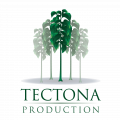Panama's demographics and economy
The size and population of the country
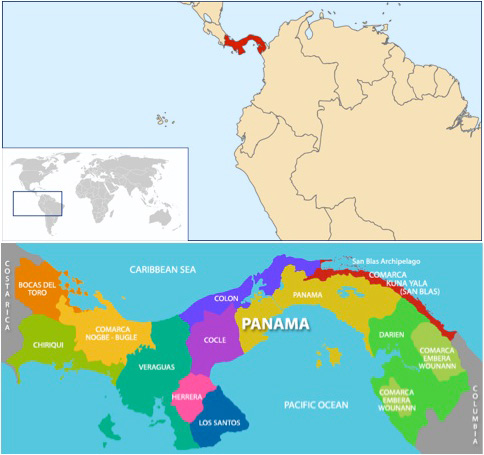
Economy
Panama’s economy has developed strongly in recent years, the country has before the financial crisis had double-digit growth rates but has lived through the financial crisis in first class. In 2012, gross domestic product growth is expected to be 9%. The country understands more and more to take advantage of the country’s unique location as a land bridge between North and South America and with short access from East to West side of North and South America.
It is quite official that Singapore is a great source of inspiration for the choice of the strategy for the country’s economic development and the results of the strategy shows better and better results year by year.
The country’s currency is called Balboa but is linked 100% to the US dollar, and you only have Balboa as coins, banknotes are US Dollar banknotes, but even US coins can be used in the country without any problems.
The country is very business-friendly and positive towards foreign investors. The only restrictions for foreigners without resident status are that they can not own definite businesses (points of sale to the final consumer), everything else can be done, including wholesale business within the country’s borders.
Panama has an efficient and secure banking system and no laws prevent foreigners from adding or withdrawing capital/profits from legal investments in the country. As the national currency is USD, there is also no difficulty in switching to another currency.
The country contains many contrasts, contrasts between rich and poor and the contrast between the capital and “Interior” as the Panamanians call all the area outside the capital, including the other big cities. Just an hour’s drive from the capital’s Metropol culture, you can see Native American tribes paddling around in their home-built canoes. In “Interior” you earn far from the official average income of approx. 1200 USD pr. month.
The minimum wage is currently approx. 350 USD pr. month, depending on the province.
To understand Panama’s economy, think of the word HUB. (node)
Since the first Europeans came to North and South America in the 16th century, Panama has thrived on its geographical location. The country’s first Hub function started as early as the beginning of the 16th century where the Spaniards used Panama as a trading center and as a base for exploring new colonies. Gold was brought from Peru on the West side of South America to the coast on the East side of Panama and from there on to Europe.
In the mid-1800s, the company behind the Pacific-Atlantic train connection, the Panama Railway, was the most expensive stock on the New York Stock Exchange, carrying gold and passengers between California and the east coast of the United States via the 80 km short land distance between the two oceans.
Panama, an international service center
The above historical examples can be transferred to the situation today. It is still a base for North and South America. From Panama, one can in a short time reach both the East and West side of both North and South America, a natural place to have its American base.
Today it is called canal company / container freight, air travel and a lot of additional services such as banking, the world’s second largest free trade area, insurance company, international ship register, pharmaceutical and health companies, law firm and tourism (see separate section), service companies produce 80% of the country’s revenue.
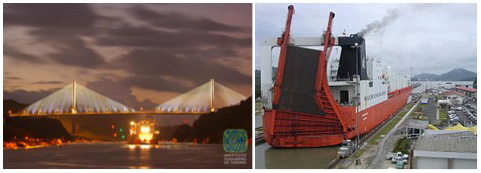
Channels:
The channel revenue is still Panama’s largest single revenue, more than 4 million. containers are moved every year via the canal, the country has an annual income of over 2 billion. USD on canal speed.
The canal has been utilized to its maximum for a number of years, but an ongoing expansion of the canal will result in a capacity increase of 3 times compared to today.
Airplanes, passenger transport and freight:
Copa Airlines, partly owned by the former Continental Airlines, now United Airlines, is the largest airline in Panama and is growing in these years more than ever. The perfect location (and the United States’ strict visa rules for South Americans and Asians) makes Panama a perfect hub for distributing travelers from the United States, Europe and Asia to further destinations in Central and South America.
Tocumen Airport, just outside Panama City, has an efficient transit system where Copa Airlines planes land their many planes at the airport 3 times a day at 1 minute intervals. Without having to move suitcases or pass checks, passengers can then easily switch to another aircraft.
Condor, Iberia and KLM fly direct Europe Panama. The airport is also an integral part of the country’s large freight system, where goods can switch between planes, ships or be transported across Panama by train.
Banking:
Panama has for many years been the financial center of the Central American countries, which exist approx. 100 different banks in the country. The first skyscrapers in the capital were owned by the many international banks in Panama.
Again the location has been crucial to the success, but also the use of the US dollar as a national currency, political security (see separate section), the business and foreign-friendly laws and the possibility of offshore status in the country (tax exemption of activities outside Panama) has been strongly contributing to the success of banks in the country.
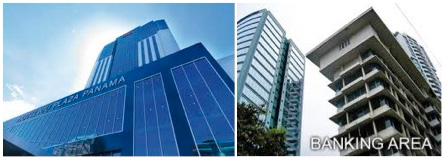
The world’s second-largest free trade area, Colon:
The Colón Free Zone extends over an area of 2.4 km2. It is located near the entrance to the canal on the Atlantic side. The zone receives more than 250,000 visitors a year and has approx. 1,750 established companies. It generates exports and re-exports worth more than USD 6.5 billion, calculated on the basis of all the services and facilities offered in the Free Zone, for the import, storage, collection, repackaging and re-export of products from all over the world: from all types of electrical appliances for pharmaceuticals, spirits, cigarettes, furniture, clothing, shoes, jewelry, toys, etc.
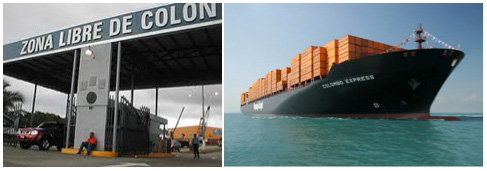
The success is again achieved by the location, complemented by modern port conditions, container ports, direct access through the Pan American Highway, air access, and daily train transportation of containers from the Pacific to the Atlantic.
Revenue from trades performed or consumed abroad is tax-free and there are no taxes on shipments to or from the Free Zone.
Production in Panama
Production in Panama now amounts to only approx. 20% of total GDP. In addition to food, the country produces aircraft parts, cement and textiles.
Agriculture and forestry in Panama
Although the country’s agriculture has gone from making up approx. 29% of the country’s GDP in the 1950s to today approx. 7.5%, it is still an industry of significant importance to the country.
The reason for the decline is that other industries have grown a lot in recent decades, not that agricultural production has fallen.
Half of the country’s land is used for agriculture and forestry.
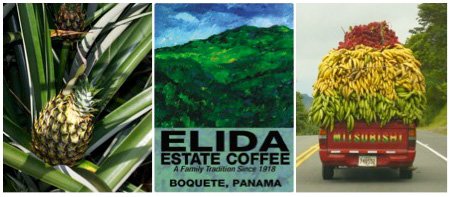
There are still many family farms in Panama, where the earth’s crops are mainly eaten by the individual families and thus do not count in the statistics. Agriculture is important for the survival of the small communities in the countryside e.g. in Darien Province where Tectona Production operates.
In Darien, agriculture and forestry are pretty much the only industry that exists. Panama’s desire for self – sufficiency also makes politicians support the profession. Of industrial operations, bananas, shrimp, sugar, coffee and pineapple make up the largest part of production.
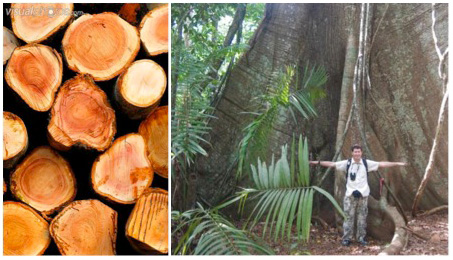
Land use:
Arable land: 7%
Permanent crops: 2%
Permanent grassland: 20%
Forests and forest areas: 44%
other: 27%
Panama has significant natural forest resources that can be used for industrial use.
There are also approx. 60,000 acres of plantation, predominantly Teak and Pine. But growing concern over deforestation has led to increasing regulation of the forest industry.
In the 1990s there was deforestation of approx. 2.1% pr. year. Following the introduction of stricter legislation, timber production has fallen to 50% since 1996.
Today, it is not permitted to clear land with primary natural forest for agriculture or plantation management, only land that is already used for agriculture or has secondary growth may be used for agriculture or plantation management. Annually, 60,000 m3 of trees are felled for industrial use in Panama.
